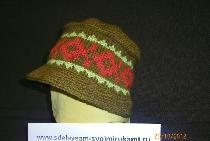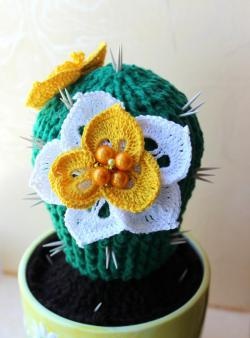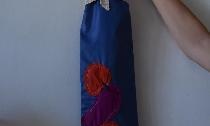Tube scarf with 3D applique
Snoods, scarves, shawls, capes and other indispensable accessories for the cold season equally coexist in fashion. A “highlight”, or rather a whole bunch of grapes, in a designer short scarf with a voluminous appliqué, combining several knitting techniques, will help you stand out from the crowd, attract all the attention of socialites and remain unique. The model is simple, but effective and practical, because the bunches of grapes are arranged in such a way as to partially cover the cheeks and ears of the happy owner from frost.
To create this model you will need:
- thick yarn of the main color (suitable from 200 to 240 meters in 100 grams);
- leftover yarn for appliqué (I use Lana Gold Alize 800m/100g and its smaller yardage 240m/100g);
- knitting needles No. 8;
- hook No. 3-3.5;
- needle.
We knit the main fabric; on large knitting needles it will be ready in two to three hours. We cast on the edge loops with double thread 35+2; if desired, you can make the scarf wider.
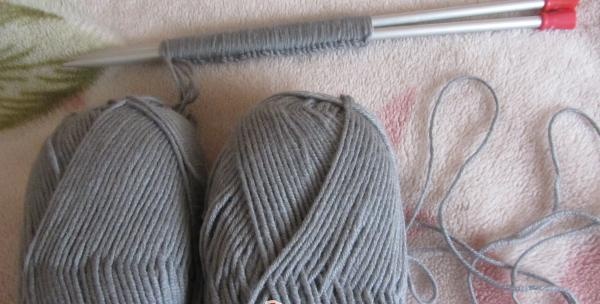
We knit the first row with purl loops so that the edge of the product does not bend when worn. Next we knit in stockinette stitch, alternating purl and knit rows of stitches.
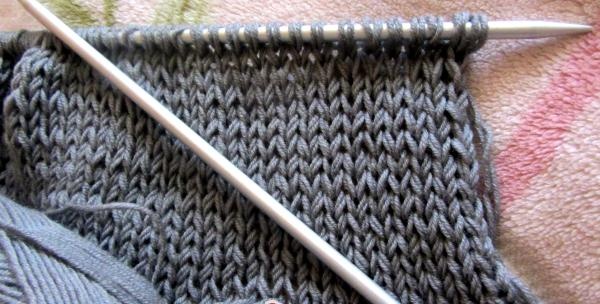
At the required height (for me it is 23 cm), we close the loops, fasten the thread and cut it.
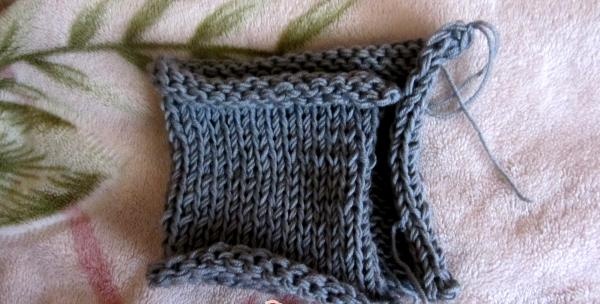
If the yarn contains acrylic, then there is no need to steam the fabric; acrylic loses its shape and the pattern is often “compressed”.
Let's start knitting grapes. She will work using the freeform technique, which is translated from English as “free form”. Freeform involves combining any knitting elements and working with yarn of any volume and composition. In this technique, imagination and the ability to combine colors and shades are important so that the finished product fascinates with its harmony and grace, and does not scare away onlookers.
We will use two colors for the applique: purple and brown.
You can start in two ways: by wrapping the thread several times around your index finger and thus knitting the first row with single crochets, or casting on a chain of 5 VPs, closing it in a ring with a connecting stitch and also knitting the first row with ST.B.N.

We end the row with a connecting column. We knit one lifting loop, and again insert the hook into the center of the first “circle”, knitting in a circle, “increasing” the volume of the grape.
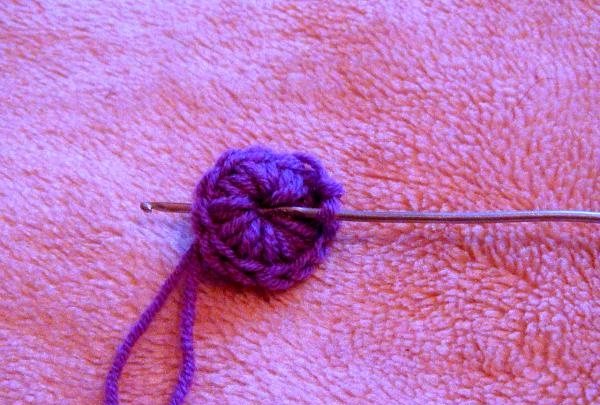
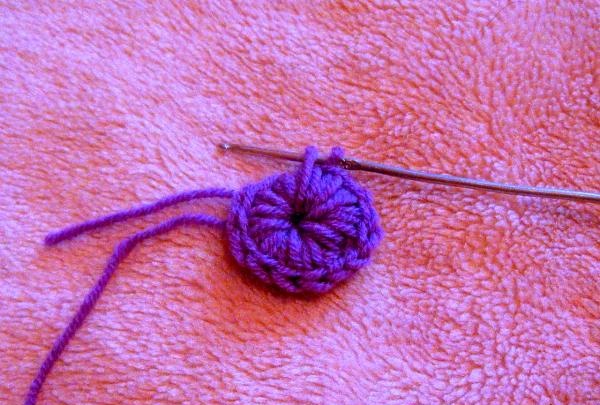
I make three rows, after which I cut the thread and fasten it. The more rows, the “juicier” the berry will be. For the smallest element, two rows are enough.
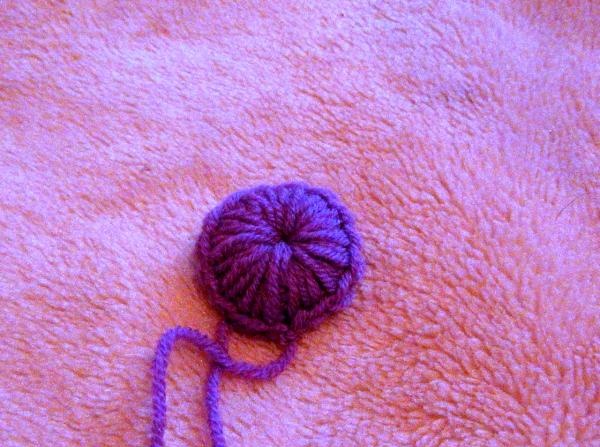
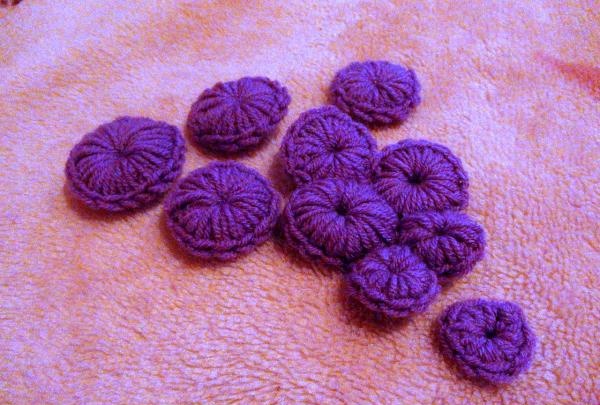
In total, we will need from 6 to 10 “grapes” for one bunch. They can be either symmetrical or asymmetrical. In my work, I knitted three additional “berries” and placed them symmetrically with respect to the main appliqué. We sew the “grapes” together with a needle and place them on the scarf in random order.
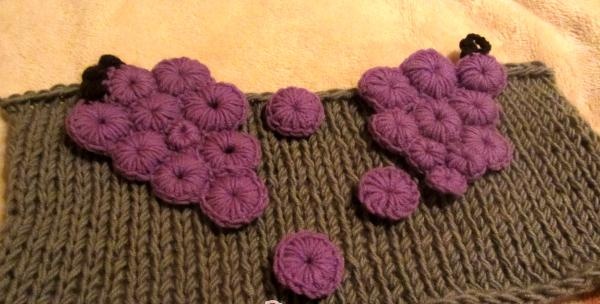
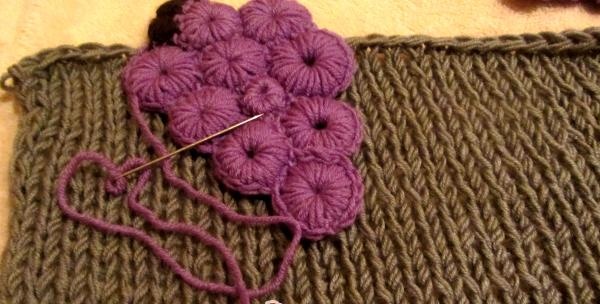
We tie the top of the bunches with another freeform element - a postal or twisted column.We fasten the brown thread, make 4 lifting loops and 1 dc. into the next loop. Next, we throw a thread onto the hook and lift the working thread, clasping the ST.SN. We repeat this several times, the more, the more magnificent the twisted column will be. The difficulty of this element is to pull the hook through all the collected turns.
For finishing we need 3-5 twisted columns.
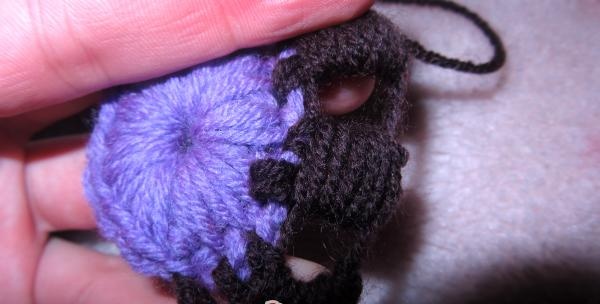
We sew the finished scarf and wear it with pleasure.
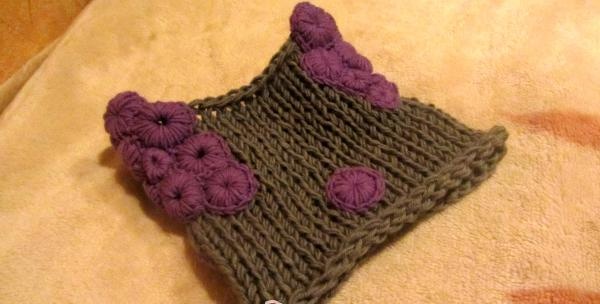
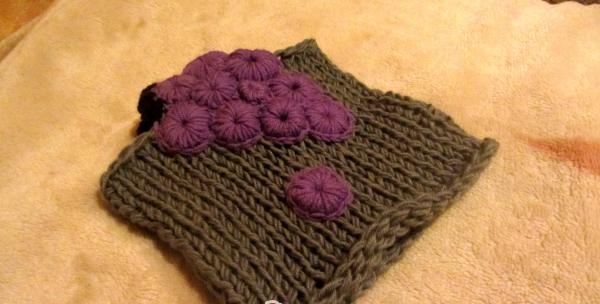
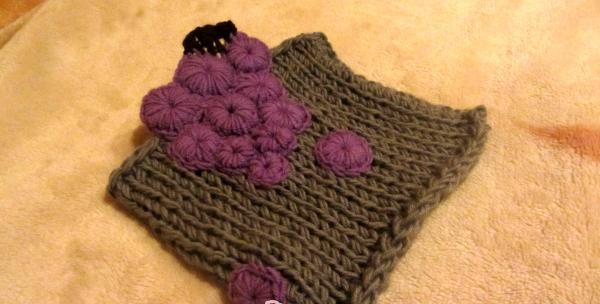
To create this model you will need:
- thick yarn of the main color (suitable from 200 to 240 meters in 100 grams);
- leftover yarn for appliqué (I use Lana Gold Alize 800m/100g and its smaller yardage 240m/100g);
- knitting needles No. 8;
- hook No. 3-3.5;
- needle.
We knit the main fabric; on large knitting needles it will be ready in two to three hours. We cast on the edge loops with double thread 35+2; if desired, you can make the scarf wider.

We knit the first row with purl loops so that the edge of the product does not bend when worn. Next we knit in stockinette stitch, alternating purl and knit rows of stitches.

At the required height (for me it is 23 cm), we close the loops, fasten the thread and cut it.

If the yarn contains acrylic, then there is no need to steam the fabric; acrylic loses its shape and the pattern is often “compressed”.
Let's start knitting grapes. She will work using the freeform technique, which is translated from English as “free form”. Freeform involves combining any knitting elements and working with yarn of any volume and composition. In this technique, imagination and the ability to combine colors and shades are important so that the finished product fascinates with its harmony and grace, and does not scare away onlookers.
We will use two colors for the applique: purple and brown.
You can start in two ways: by wrapping the thread several times around your index finger and thus knitting the first row with single crochets, or casting on a chain of 5 VPs, closing it in a ring with a connecting stitch and also knitting the first row with ST.B.N.

We end the row with a connecting column. We knit one lifting loop, and again insert the hook into the center of the first “circle”, knitting in a circle, “increasing” the volume of the grape.


I make three rows, after which I cut the thread and fasten it. The more rows, the “juicier” the berry will be. For the smallest element, two rows are enough.


In total, we will need from 6 to 10 “grapes” for one bunch. They can be either symmetrical or asymmetrical. In my work, I knitted three additional “berries” and placed them symmetrically with respect to the main appliqué. We sew the “grapes” together with a needle and place them on the scarf in random order.


We tie the top of the bunches with another freeform element - a postal or twisted column.We fasten the brown thread, make 4 lifting loops and 1 dc. into the next loop. Next, we throw a thread onto the hook and lift the working thread, clasping the ST.SN. We repeat this several times, the more, the more magnificent the twisted column will be. The difficulty of this element is to pull the hook through all the collected turns.
For finishing we need 3-5 twisted columns.

We sew the finished scarf and wear it with pleasure.



Similar master classes
Particularly interesting
Comments (0)



